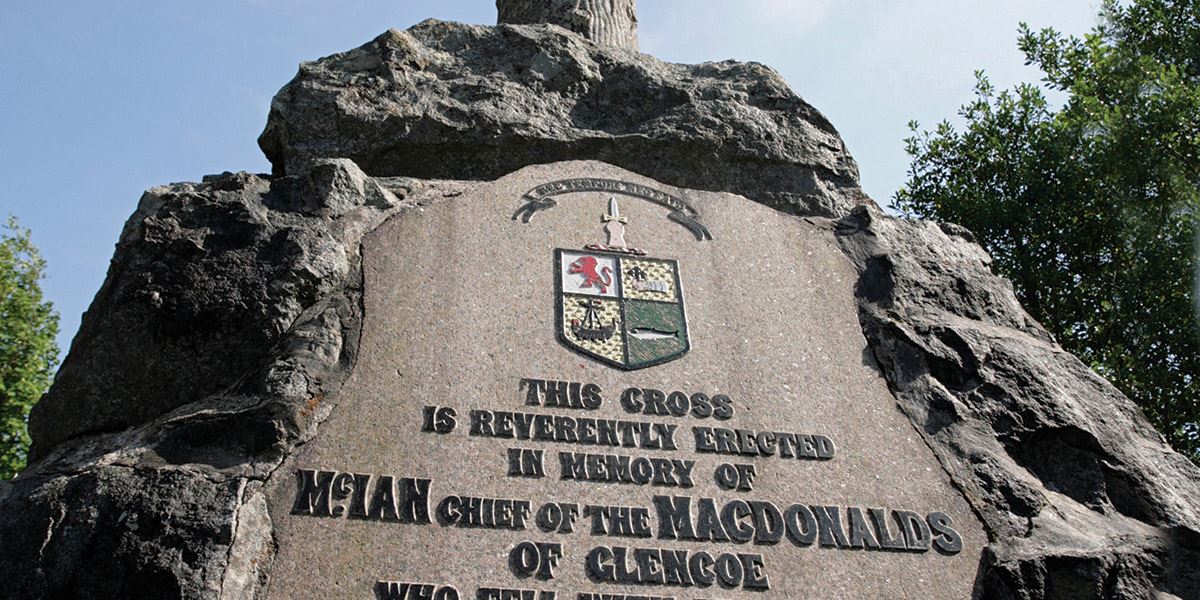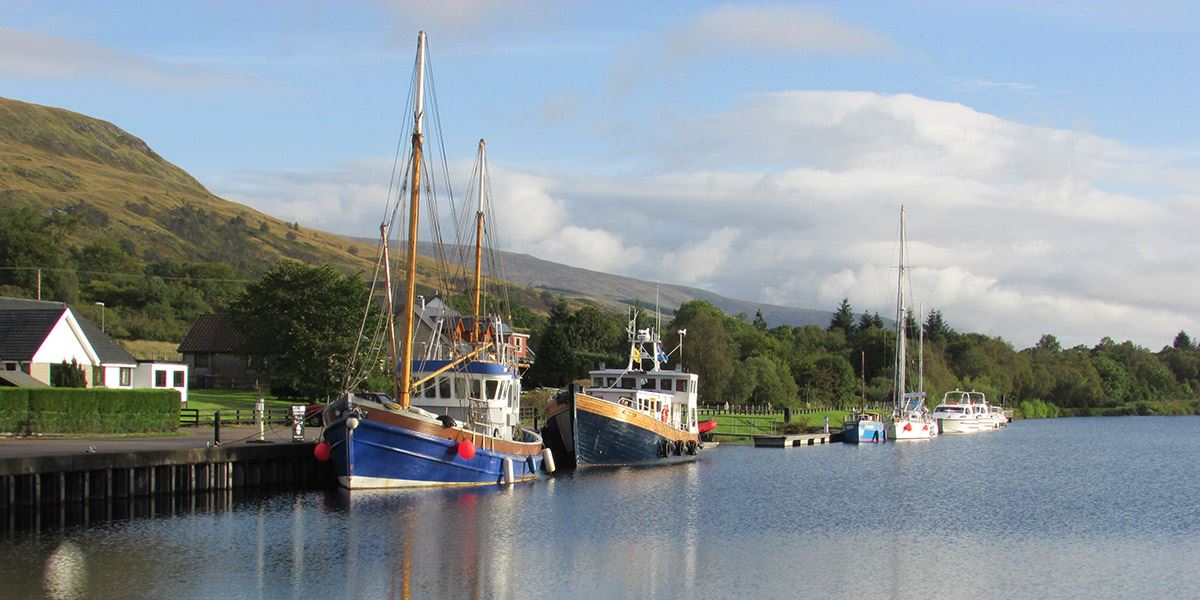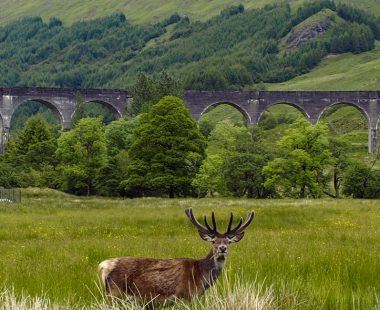By Kingfisher Visitor Guides
One of the most remote areas of the UK, Lochaber covers 4,648km2 in the Highlands of Scotland and has a fascinating history. It has a population of approximately 19,000 people, with around 11,000 living in the main town of Fort William.
Dramatic landscapes
Outside Fort William, Lochaber is one of the least densely populated areas in the whole of Europe. The dramatic landscape was born out of fiery volcanic activity and glaciers – and the region has a fiery history to match. Fort William was originally called Inverlochy and the name continues in the ruin of Inverlochy Castle situated just outside the town centre.
A new fort was built at a strategic position at the head of Glen Mhor on behalf of Oliver Cromwell in 1654, and this became the region’s prominent military site. In the 1690s, William of Orange ordered the fort to be enlarged, and Inverlochy then took the name of the new king and became known as Fort William.

Memorial to the Massacre of Glencoe, Glencoe Village
Glencoe was the violent and bloody scene of one of the most infamous massacres in Scottish history. In February 1692, men, women and children of the Clan MacDonald of Glencoe (or MacIains as they were more specifically known) were slaughtered while they slept by Captain Robert Campbell and his men.
This shocked the country, particularly as the men had enjoyed their victims’ hospitality for several days in the lead-up to the massacre. It became an important piece of anti-government propaganda for the Jacobites in Edinburgh.
Fort William was originally called Inverlochy and the name continues in the ruin of Inverlochy Castle situated just outside the town centre
Jacobite uprisings
1715 and 1745 marked Jacobite uprisings in the Highlands. In 1745, Prince Charles Edward Stuart, commonly known as Bonnie Prince Charlie, led the Jacobite Rising from Glenfinnan and headed south to try to take back the British Throne for his father, James Francis Edward Stuart. In both of these occasions, Jacobite armies tested the newly constructed battlements of Fort William, with the fortress surviving the onslaught.

The Caledonian Canal
However, the fort didn’t survive the arrival of the railway. It was destroyed in 1894 to make way for a railway. The railway made this remote region far more accessible, and it now welcomes thousands of travellers each year. The Caledonian Canal, built by engineer Thomas Telford, has also played an important part in the fortunes of the region.
Originally built to provide safe shipping as an alternative to the treacherous route north through the Pentland Firth and around the dangerous waters of Cape Wrath, the construction of the canal also provided important employment at the time. The canal eventually opened in 1822 and is now an attraction enjoyed by hundreds of thousands of visitors each year. There are plenty of places to discover more about the history of the region. Try the West Highland Museum in Fort William to learn more in-depth details of Lochaber’s fascinating story.
Read more about Fort William and Lochaber









